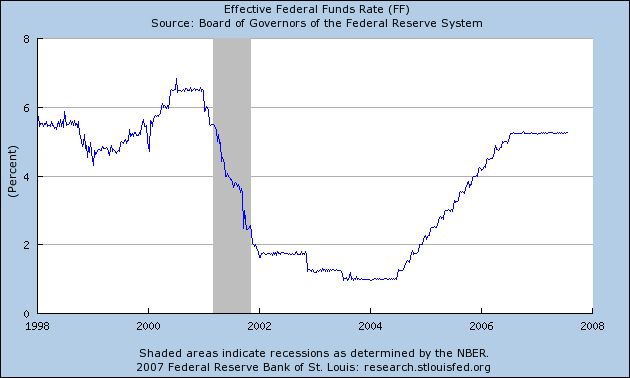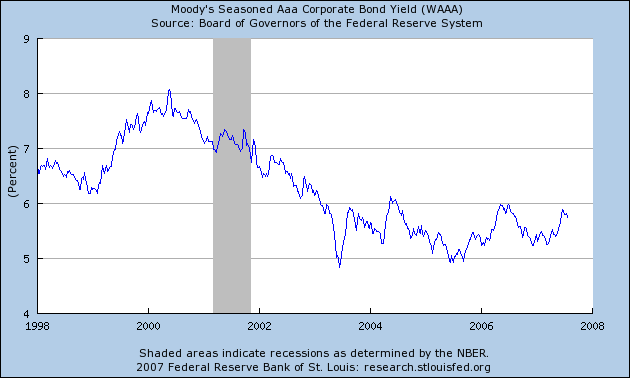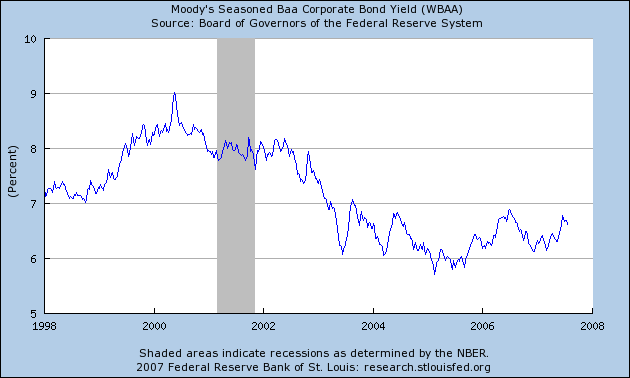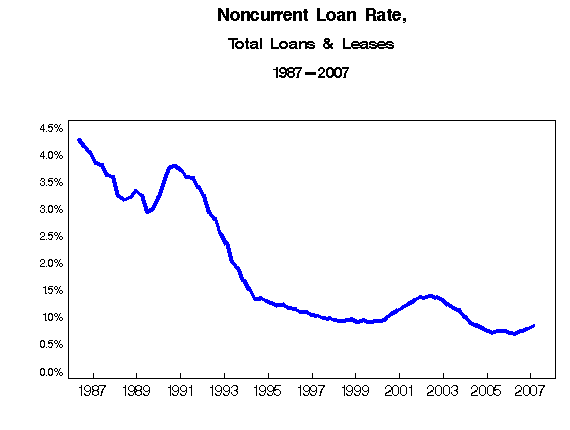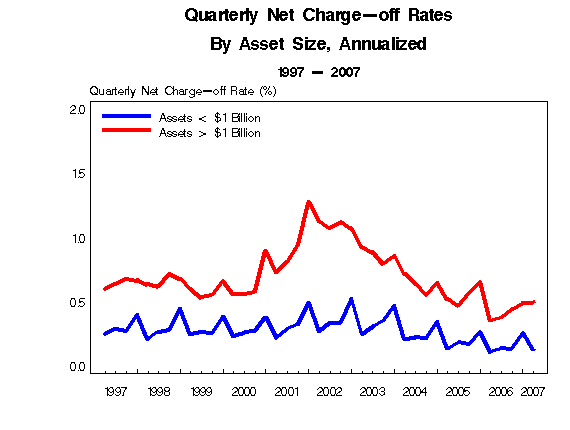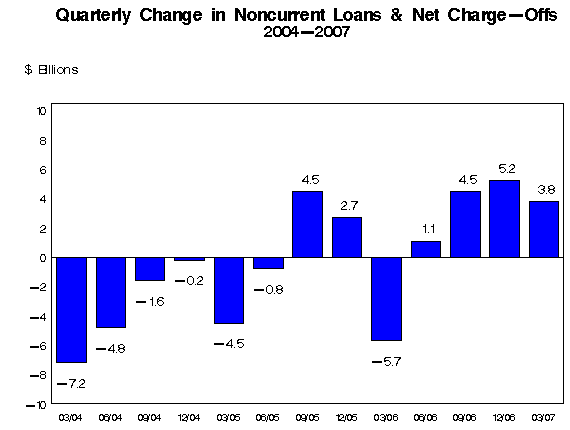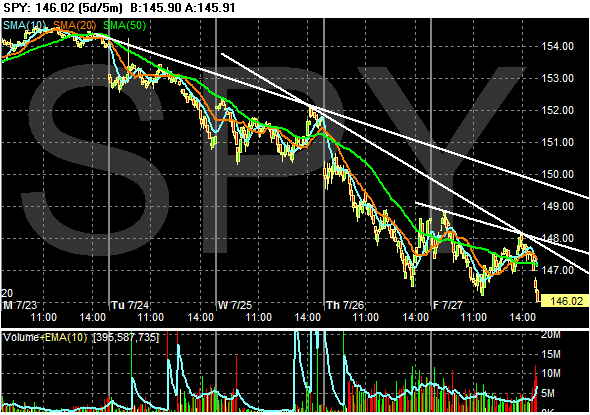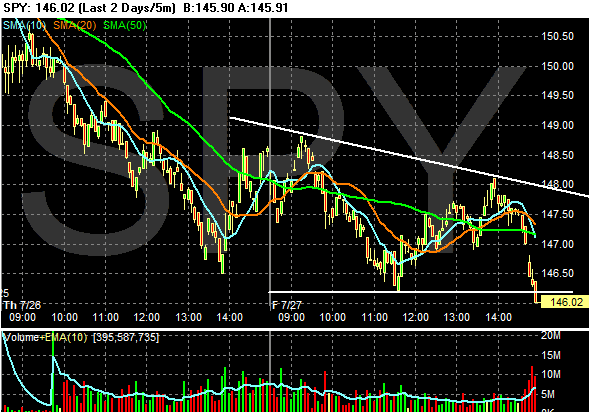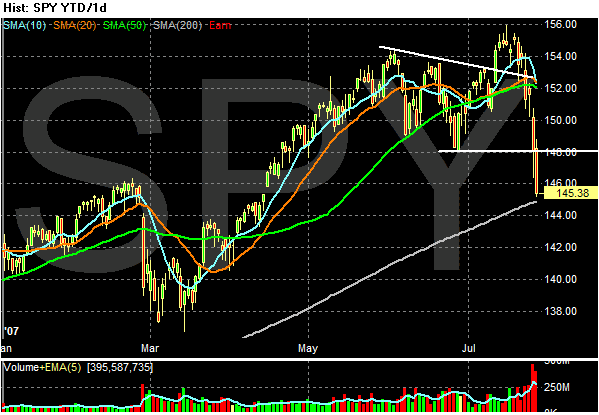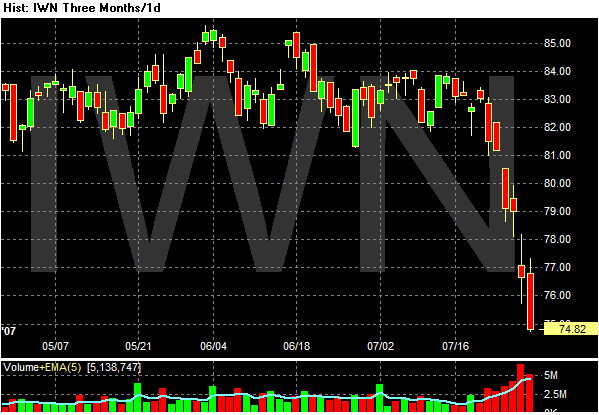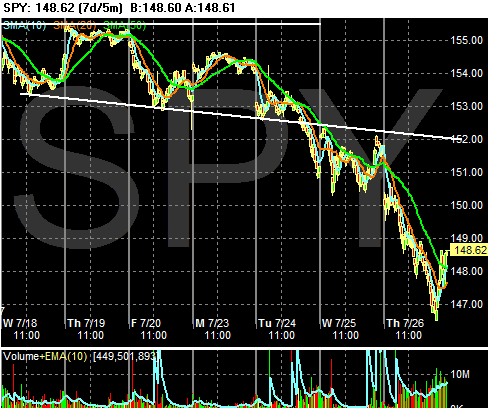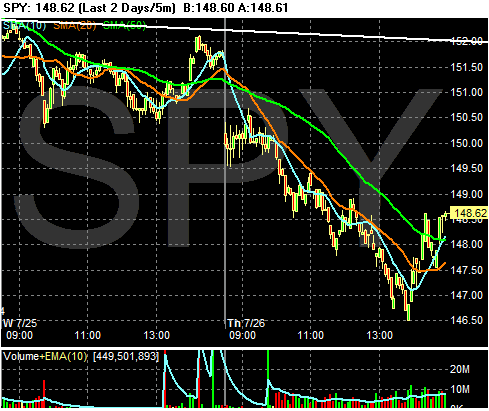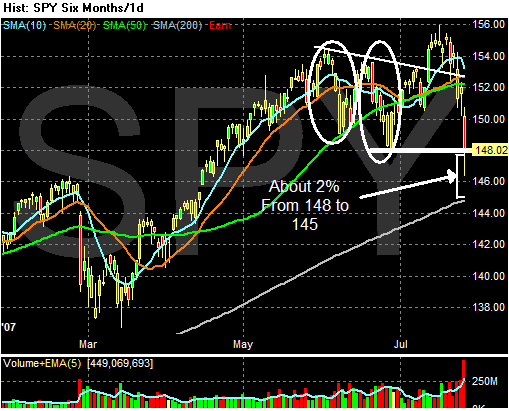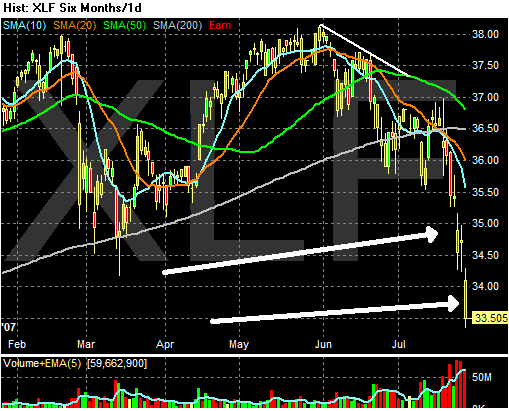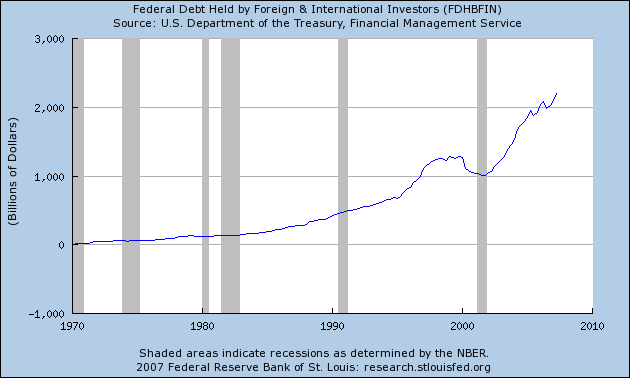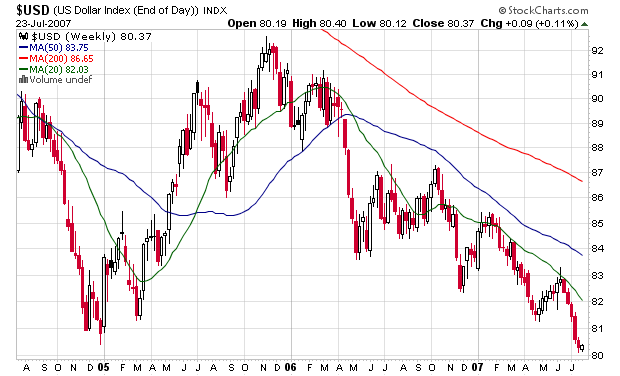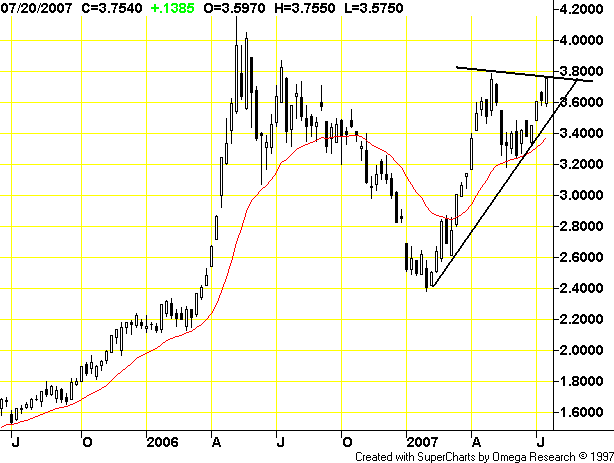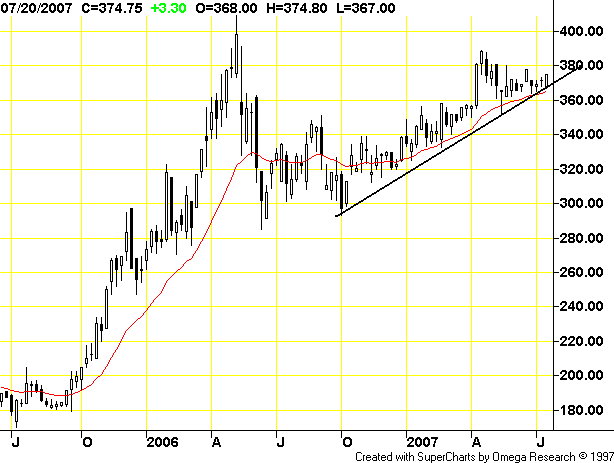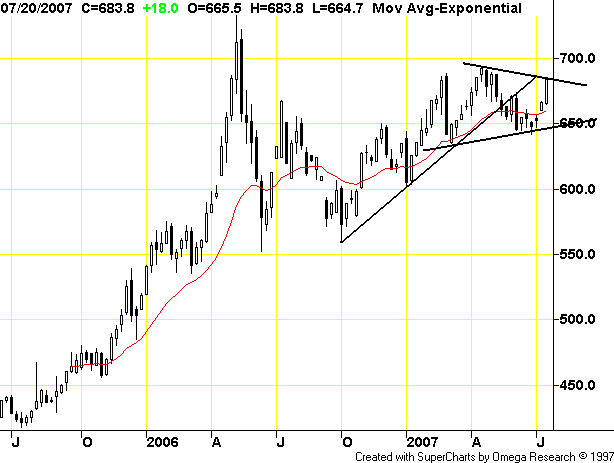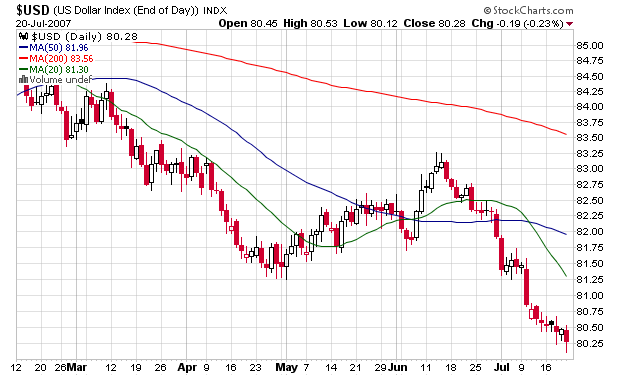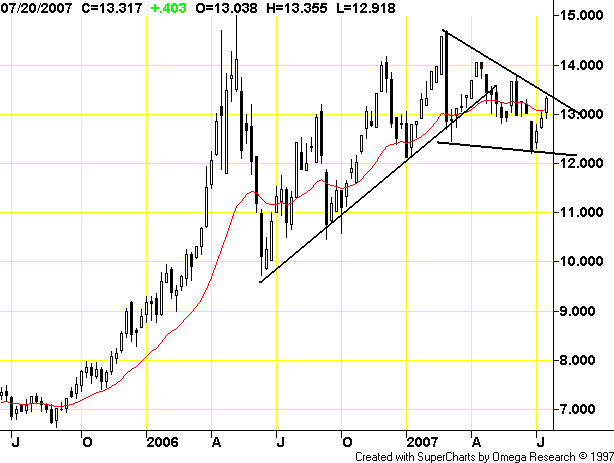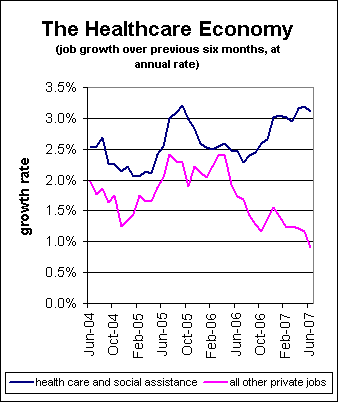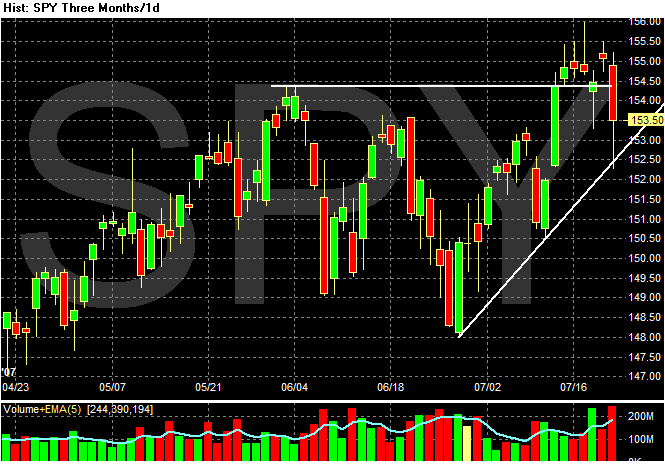However, it frankly could have been far worse. We could have received evidence that most companies were not hitting their earnings estimates, that the economy was slowing down quickly, inflation was out of control, and/or some unknown event had increased the risk in the risk/reward equation, but that was not the case this week. Sure, there is legitimate fear that the problems over subprime, housing, and the M&A boom will turn to a bust and the market may be sending signals that these problems are ahead. But when I take a big picture look, I think there's a decent chance that the market overall was reacting to pure old-fashioned fear of the unknown. Moreover, I think we're also seeing a transition away from "everything is a buy mentality" to something far less aggressive. These kind of market transitions are never pleasant and can be very painful.
My perception of last week's sell-off is very middle of the the road. It doesn't surprise me. Let's face facts: there are some major problems out there in the economy. Housing has been tanking for the last year or so; subprime loan delinquencies are increasing and consumer spending was slow last quarter. Despite these problems, the markets have rallied for the last year or so with a few speed bumps along the way.
But there are also some good points to remember. Let's start with this quarter's GDP and do some simple back of the envelope calculations. GDP growth came in at 3.4% last quarter. This was in spite of the weak housing market and slow consumer spending. Exports were a big part of that number; they were responsible for 1.18 of the 3.4%. There is no reason to think this won't continue with a weak dollar and a strong global economy. Government consumption added .82 and gross private domestic investment added .49, thanks to a big kick from nonresidential investment. Let's assume that gross private domestic investment drops to adding 0.00 to GDP next quarter and government spending drops to its 15 quarter median of adding .25 to growth. Assuming all other elements of the GDP report contribute the same amount, the US would have GDP growth of 2.34%. This isn't great, but certainly not terrible. Also remember this quick calculation assumes the PCEs remain at adding 1.5 to the overall number.
The one wild care out there is the LBO/CDO/CLO market. As I wrote in the post below, banks are in decent shape, although they are increasing their loan loss reserves. In addition -- and here is the really big problem -- we don't know who owns what percentage of their portfolio in what assets. If hedge funds reported their holdings, we could find out right now who is in the worst shape and deal with it. But right now, we simply don't know. And that's a big problem that we're going to have to contend with and hopefully solve in the next few months.
The point is the underlying fundamentals aren't great, but they're not terrible either. There are economic sectors that are in decent shape. However, overall growth is very uneven. So long as housing remains a problem -- and it will for at least another 4 quarters if not longer -- expect this trend to continue.
In my opinion, the US economy has a bad case of the sniffles and a slight fever, but we're not hacking every 5 minutes and burning with fever. We can still work, but not as efficiently as we would like.
